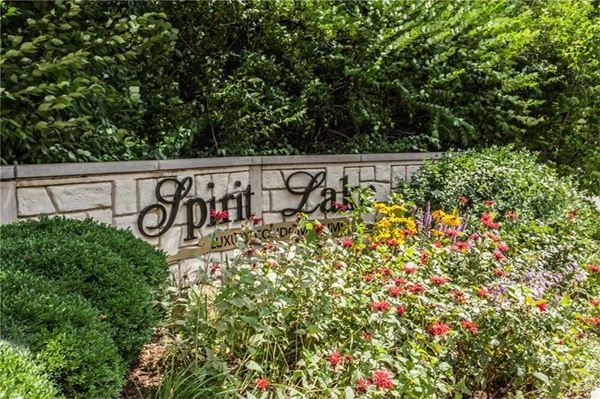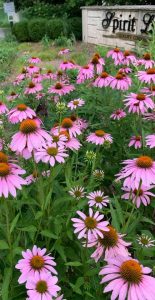INPS is working with the Indiana Wildlife Federation to develop accessible, comprehensive information to guide homeowners, HOA groups, and municipalities so that they can successfully incorporate native plants into a wide variety of urban, suburban, and rural landscapes. Please check back regularly for new material. Feedback, comments, and questions are welcome at landscape@indiananativeplants.org.
Landscaping a Condo Complex
INPS member Mary Durkin has worked for years with her Spirit Lake Condominium residents to create environment-friendly core principles and detailed guidelines for maintenance crews. Spirit Lake Condos consists of eight 5-story apartment-style buildings situated between the White River and a 13-acre lake. Native plants are in evidence throughout the complex. We thank Mary for sharing the insights she has gained working with the Spirit Lake board and residents.
Over time the condo association developed these goals. Their landscaping would:
- Avoid attracting Canada geese
- Be attractive to residents, support/improve property values
- Be appropriate environmentally (sensitivity to lake, woods, etc.)
- Assure safety for people, pets and wildlife
- Have affordable installation and maintenance
- Be managed according to current and emerging best practices
Overcoming Challenges
Here are Mary’s tips for overcoming typical challenges.
Credibility: Prove your credentials to the board and residents.
- Do research, gain knowledge you can share concerning problems (ex: Canada geese).
- Get to know every square inch of your property so you can discuss it.
- Attend trainings and report what you learn to the board.
- Show up as a cheerful volunteer, but not only on landscape events/issues.
- Acquire certification (Master Gardener, Tree Steward, etc.).
- Join INPS, host a meeting in your clubhouse.
- Connect with residents/boards of other properties that have been successful.
- Enlist experts (not vendors) to visit your property and report on their visits.
- Volunteer to organize and recruit residents for a “clean-up the grounds” day.
Objections from residents: Educate the residents.
- Understand that most objections come from differences in taste (manicured vs “messy”) or expectations (what we’ve always done before).
- Review goals centering on residents’ values: property values, safety, current trends.
- Write articles in HOA newsletter (ex: What’s blooming now around the grounds, We are helping save Monarchs, Why leaves change color, The role of beneficial insects) Include photos, and make sure sources and your by-line are shown in the article.
- Post information in building lobbies (ex: “Do not feed the geese” sign; chart of root systems of native plants vs turf; goldenrod vs ragweed, photo IDs of butterflies).
- Announce/invite residents to attend trainings.
- Host walk-arounds of the property for residents to see both the good and the bad.
- Organize a photo contest of pollinators/plants/wildlife taken on your property.
- Emphasize safety of pets, children and wildlife (less chemicals).
- Identify a problem (example erosion), propose a demonstration “native plant” solution.
- Propose/install pollinator “pocket gardens” as small scale demonstrations.
Budget concerns: Understand and influence your HOA budget.
- Volunteer to be on your finance committee.
- Find out how much is presently spent on categories like chemicals, maintenance, replacement plants, etc., and see if $$ can be reallocated or more wisely spent.
- Set up an “Angel Fund” to solicit and park donations from residents just for native plants/pollinator pocket gardens—this needs to be part of your financial statement.
- Research grants available or partnership programs (ex: DNR).
- Prepare understanding that maintenance will still be necessary.
Politics/governance: Be smartly political.
- Keep a paper trail of the decisions that lead to your native plant policy over time, not just in your folder but in some explicit official place where they can be accessed by all. The intentionality over time is important to show future board members and residents, and helps with future decision-making.
- Know your HOA by-laws; determine if any are obstacles to accomplish your goals and learn how to change those.
- Enlist allies from among the residents and don’t make enemies among the others.
- Attend board meetings, to learn and to raise concerns in a non-confrontational way.
- Develop an ally (or several) on the board.
- Volunteer to help the board evaluate and manage the landscape portion of the budget.
- Write/influence specifications for landscape vendors for bidding out and to direct those that win contracts.
- Be cordial with the landscape crew.
- Never make an enemy among the board or landscape crew.
- If necessary, run for a board position.


